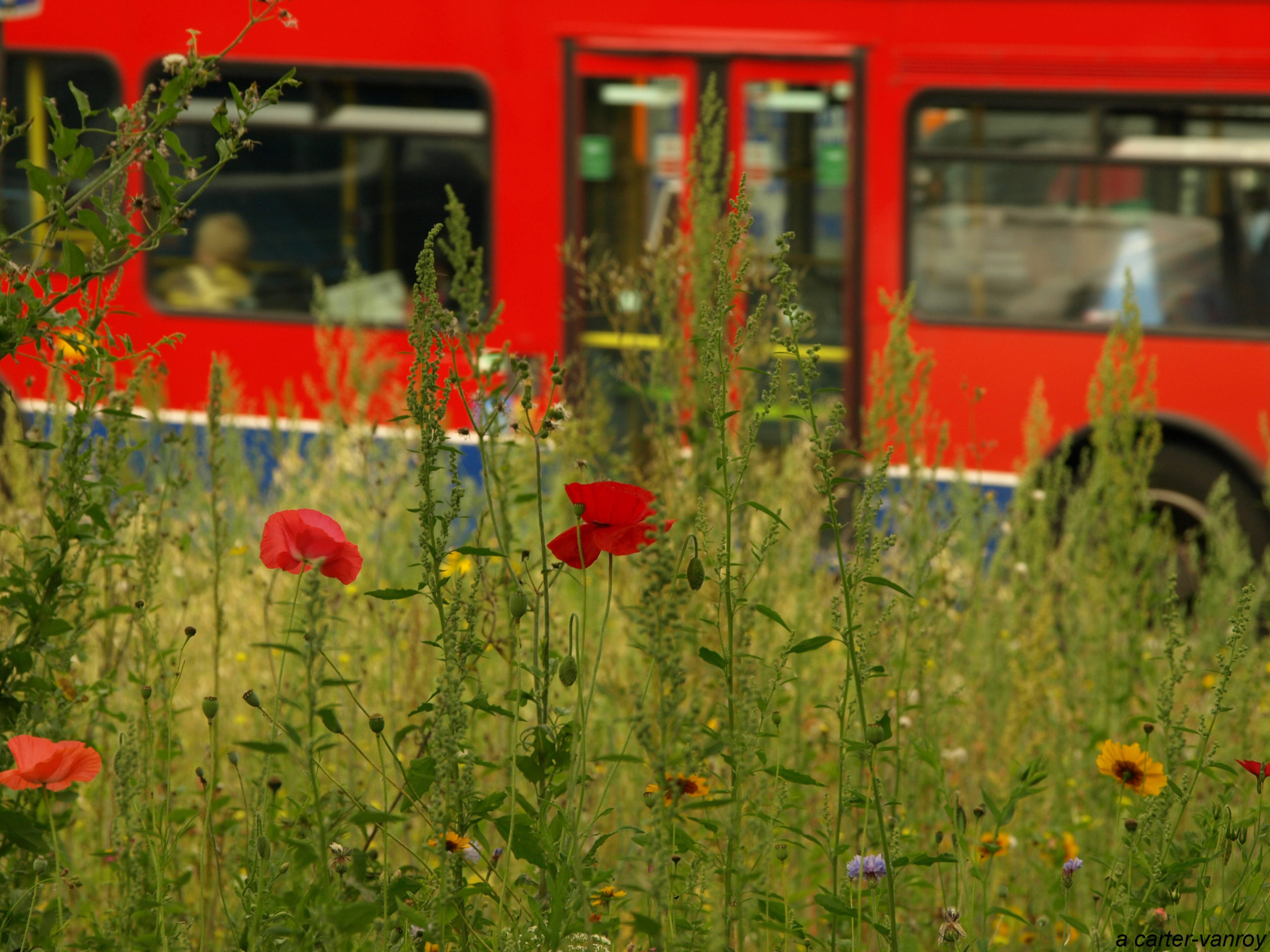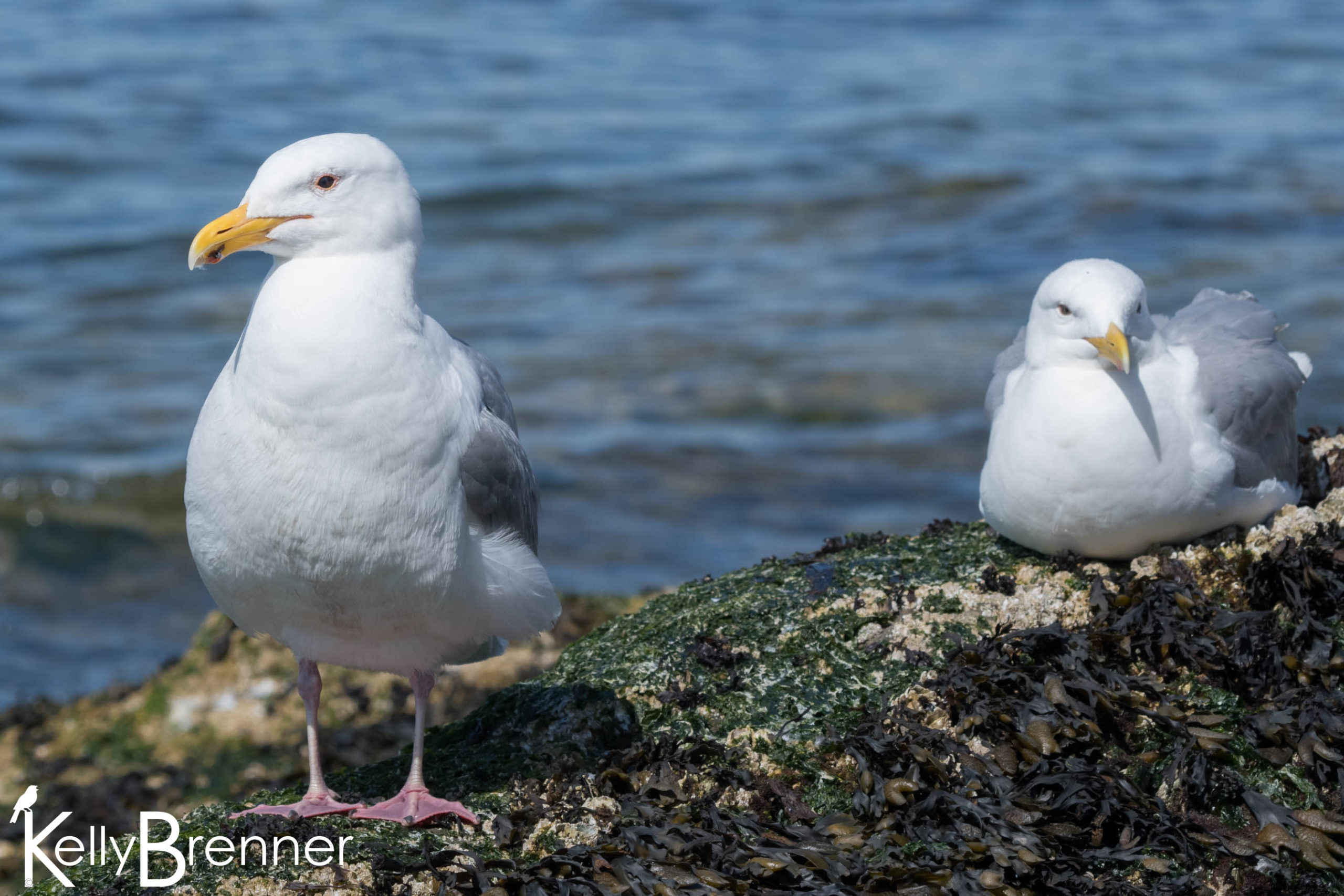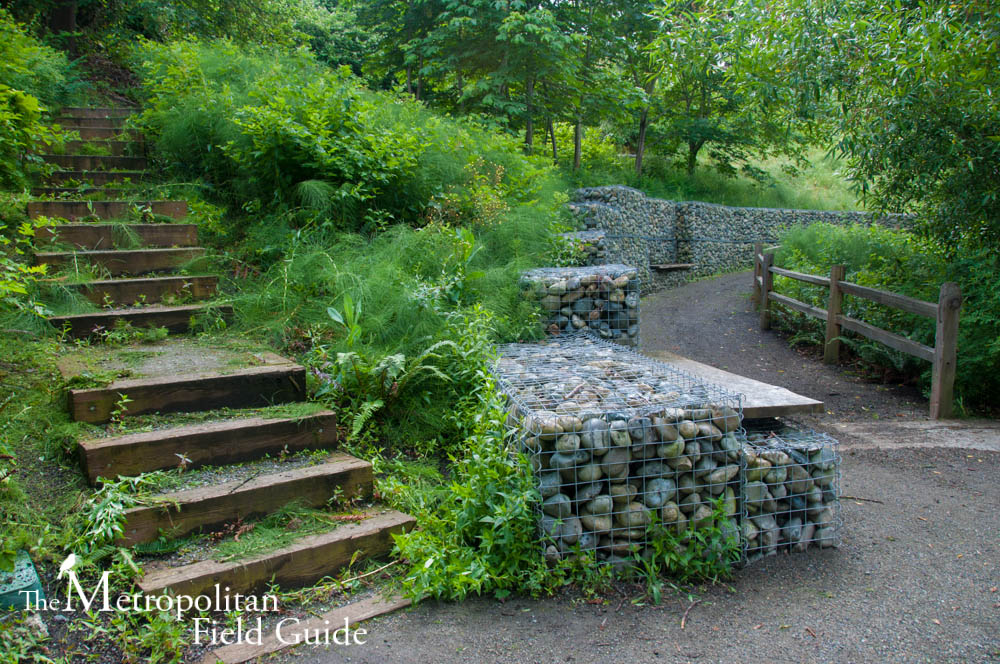In the northeast corner of Illinois you can find the city of Round Lake and the Round Lake Area Public Library. The courtyard at the library has been landscaped and is a certified wildlife habitat by the National Wildlife Federation. I recently contacted the library to find out more about their habitat and Debbie Allen, the Head of Youth Services was kind enough to respond. She helps take care of the courtyard and was responsible for getting it certified. At the end of the interview enjoy a slideshow of images of the courtyard through the seasons, kindly provided by Debbie Allen. I hope more libraries follow this example. What an excellent opportunity for nature education!
How was it decided to create wildlife habitat in your courtyard and to get it certified?
I have a background in Earth Science and Conservation and do nature programs at the library so the courtyard was like a mini classroom for some of our programs. My own backyard is a certified habitat so that was how I was familiar with that program.
What kind of challenges did you face?
We have a limited budget as to how much to spend for plantings, birdseed, feeders, etc.
How has the public reacted to it?
The public has enjoyed our annual Plant Pals program where kids and parents plant flowers and other plants in the courtyard each summer. We have added picnic tables and a bench for patrons to further enjoy that area. We have patrons who sit in the courtyard and use their laptops. Other people just come and enjoy the quiet.
In what way do you incorporate it into library programs?
Each June we have a Plant Pals program in which patrons help beautify the courtyard by planting flowers and sees. Last fall a local school group came to rake leaves, clean up the dead plants and de-litter the area. Since we recently added picnic tables this summer, I plan to take my nature club into the courtyard this fall to observe how plants are reacting to the advancing fall season. Storytime sessions may use it this fall, also.
What was the design theory for the habitat?
When I first started planting 10 years ago,there were some ornamental trees and a few bushes. I added more bushes and perennials. My aim was for shelter and housing for the birds and other wildlife.
What types of plants have you planted?
Each year we plant flowering annuals in flower beds,put up hanging flower baskets, plant herbs in containers, etc. I have also planted ferns, arborvitae, spirea, holly, hostas.
What other types of elements have been added such as water, shelter, housing etc.?
We added a birdbath, 3 birdfeeders, 1 hummingbird feeder, niger seed sock for goldfinches, and a birdhouse.
Do you keep track of what species or types of wildlife are seen?
Last winter we were part of a Cornell University bird count and I kept weekly records of the birds who visited our courtyard.
What have you seen? Birds, mammals, insects, etc?
We have seen cardinals, orioles, goldfinches, chickadees, bluejays, robins, mourning doves, house sparrows, crows,juncoes, house finches and more. I don’t know who visits at night but staff have seen squirrels,chipmunks, a rabbit (once) and a lost groundhog. Insects: bees, wasps, monarch butterflies, mosquitoes, and ants.
How do you manage coexisting with the wildlife?
We(staff) enjoy watching the wildlife through our staff lounge windows. By providing food, water and shelter we help them survive while they give us entertainment and moments of peaceful contemplation. Patrons enjoy looking at the plants and watching the birds feed from the feeders.
Further Reading::






